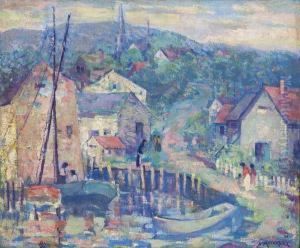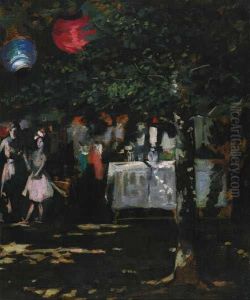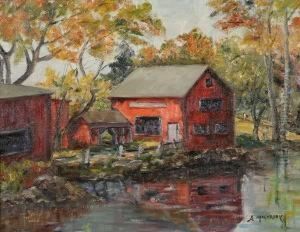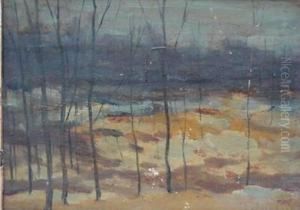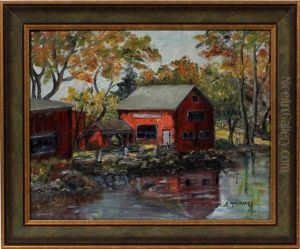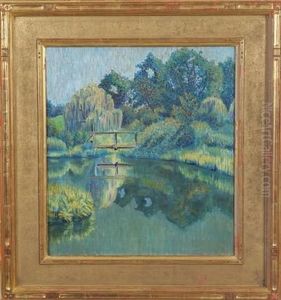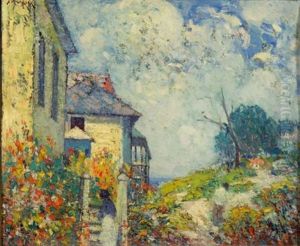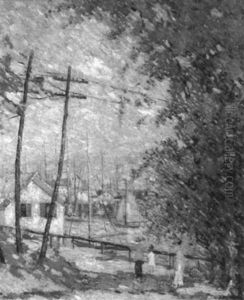Abram Molarsky Paintings
Abram Molarsky was a Russian-born American painter known for his landscape works and contributions to the Impressionist movement. Born on December 5, 1880, in Odessa, then part of the Russian Empire, Molarsky demonstrated an early talent for art which led to his formal education in the subject.
Molarsky's initial artistic training began in his homeland, but he later moved to the United States, where he continued to develop his craft. Upon arriving in America, he settled in Philadelphia, Pennsylvania, which at the time was a significant center for artists and intellectuals. He furthered his studies at the Pennsylvania Academy of the Fine Arts, where he was under the tutelage of prominent artists such as Thomas Anshutz and William Merritt Chase, both of whom had a lasting influence on his style and technique.
During his career, Molarsky became known for his ability to capture the subtleties of natural light and atmosphere, a hallmark of the Impressionist style. His landscapes often depicted serene natural scenes, ranging from bucolic countrysides to the dynamic seascapes of the New Jersey coast. Molarsky's work was characterized by loose brushwork and a vibrant palette, which helped to convey the fleeting effects of light on the subjects he painted.
Alongside painting, Molarsky also had a passion for teaching. He shared his knowledge and skills with a new generation of artists, thus contributing to the perpetuation of the Impressionist tradition in American art. His commitment to education was evident in his involvement with various art institutions and his role as a mentor to many young artists.
Molarsky's art was exhibited in numerous galleries and institutions throughout his lifetime, and he received accolades for his contribution to the American art scene. His works are part of several public and private collections, and they continue to be appreciated for their beauty and technical proficiency.
Abram Molarsky passed away on June 24, 1955, in Long Branch, New Jersey. His legacy lives on through his paintings, which continue to be celebrated for their embodiment of the American Impressionist movement, as well as through the artists he inspired throughout his career.
